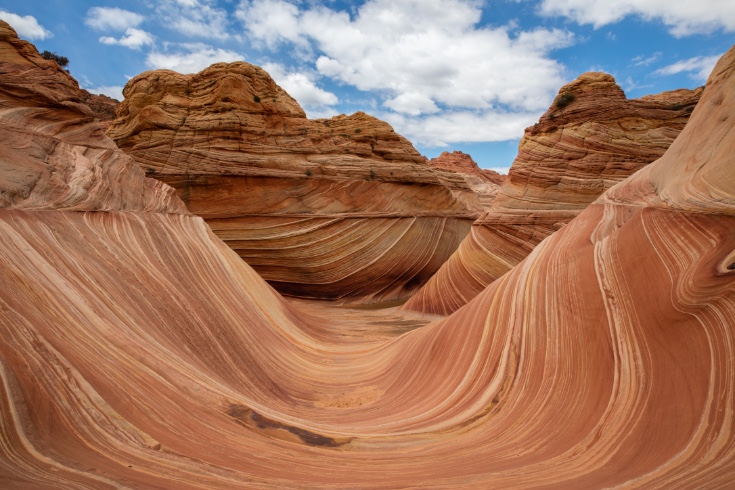![]()
![]()

The Vermillion Cliffs National Monument straddles the Utah/Arizona border northeast of the Grand Canyon and contains the most bizarre and incredible landscape I've ever seen. Within the monument is an area called North Coyote Buttes, one of the most sought after locations for landscape photographers around the world to visit. If you have a bucket list of places to see, definitely put the Vermillion Cliffs on it.
North Coyote Buttes covers a relatively large area, but the main attraction is a section called the Wave, a picture of which is shown above. Protected by the Bureau of Land Management, only twenty people per day are allowed to visit. A lottery system was put in place a number of years ago to manage the large number of people - mostly foreign tourists - interested in visiting. To give you an idea of the hikes' popularity, over seven hundred people applied the day I won a permit and this was during the summer when the temperatures typically exceed 100 degrees. Heavy rainstorms in the days prior to my trip had thankfully dropped the temperatures to well below normal, although the resulting flash floods made the primary access road impassable, resulting in a much longer drive to the trailhead.
To properly visit the area requires an eight mile trek through unmarked desert, a good bit of which involves climbing up and down slip rock, hiking through sand dunes and in our case, a short wade through a tight passageway. It's definitely a good workout. We hired a guide named Marjorie Casse through Dreamland Photo Tours, an outfit located in Kanab, Utah, to help us better explore the area. In retrospect it was a good decision given the risks of getting lost or injured in this remote area. The hike was my second time taking a trip with Dreamland and I can highly recommend their services if you will be traveling in Southern Utah/Northern Arizona, even if you are not interested in photography. You can reach them at http://www.dreamlandtours.net.
Photographing the wave is, unlike most landscape photography, best done midday when the sun is directly overhead. Wide angles work best for capturing the entirety of it and telephotos can be used to highlight the amazing swirls and patterns in the Navajo sandstone rocks. Later this year I'll be posting many more pictures from this hike as well as from previous trips to nearby South Coyote Buttes and White Pocket, a couple of the other remarkable locations within the Vermillion Cliffs.
Stay tuned.